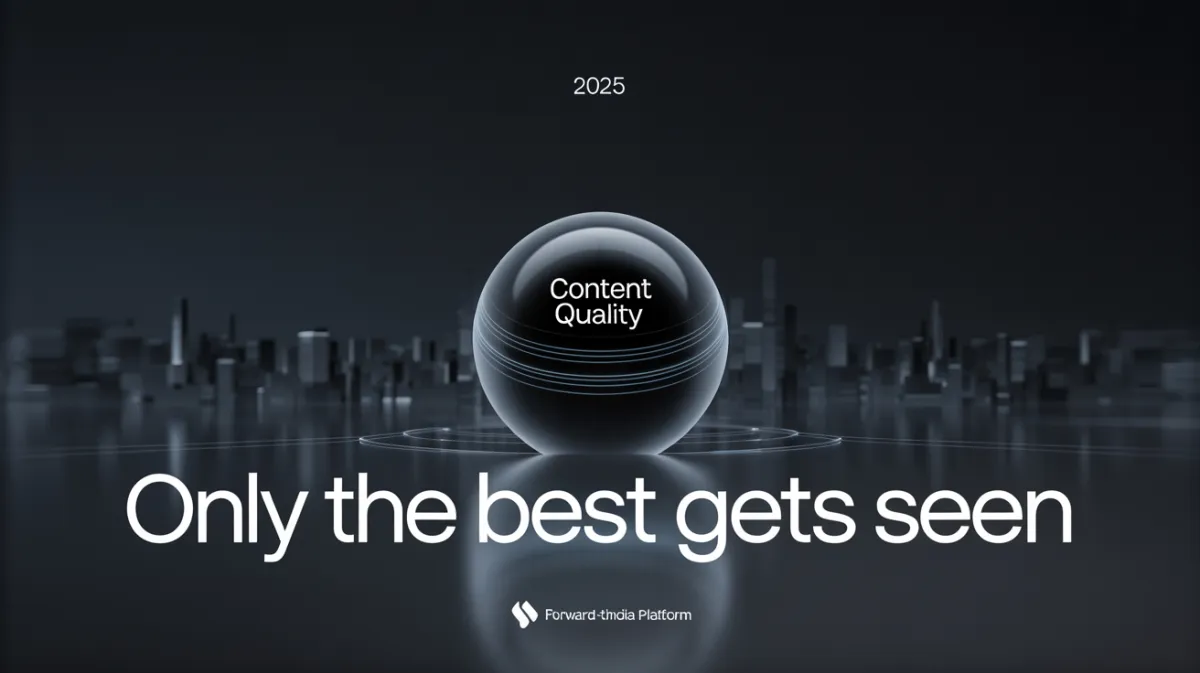
Why “Good Enough” Content No Longer Wins in 2025
Why “Good Enough” Content No Longer Wins in 2025
AI filters weak content. Learn how to stand out with content that’s optimized to be chosen.
The Content Game Has Changed
For years, businesses treated content like a box to check: publish a few blogs, add keywords, and watch organic traffic climb. That “good enough” approach worked when search engines ranked based on keyword density and backlinks.
But in 2025, the rules are different. AI-powered search (ChatGPT, Google SGE, Perplexity, Claude, and others) has changed how information is discovered and delivered. Instead of showing 10 blue links, these tools provide a single, synthesized answer—meaning only the strongest, clearest, and most authoritative content gets surfaced.
If your content is generic, repetitive, or shallow, AI will filter it out. Being “good enough” now means being invisible.
Why AI Rejects Weak Content
AI doesn’t just read words—it evaluates context, originality, and authority. Here’s what causes content to fail in 2025:
Overused Phrasing
Common AI-written clichés like “in today’s fast-paced world” trigger detection. Algorithms know this isn’t original thinking.Lack of Depth
Surface-level blogs with no case studies, data, or real-world insights are ignored. AI favors specific, verifiable examples.No Human Angle
Content that lacks nuance, tone shifts, or authentic voice feels robotic—and gets deprioritized.Poor Structure
Without clear Q&A formatting, schema markup, or summaries, content becomes harder for AI to parse and reuse.Trust Gaps
Content unsupported by credentials, reviews, or external proof is marked less authoritative.
What “Winning Content” Looks Like in 2025
So how do you stand out? The answer lies in Answer Engine Optimization (AEO)—a strategy that makes your content AI-ready. Winning content in 2025 has these traits:
Human-Led, AI-Optimized – Authentic voice, combined with structured answers AI can easily extract.
Rich with Proof – Case studies, client testimonials, data, and expert bios.
Built for Questions – Short, direct answers followed by detailed explanations.
Schema-Enhanced – FAQ, HowTo, and QAPage schema to help machines interpret your expertise.
Authority Signals Everywhere – Backlinks, directory mentions, press coverage, and social proof.
In other words, it’s not about writing more content—it’s about creating content that AI trusts and humans value.
AEO Content in Action: A Quick Example
Imagine two law firms publishing blogs on “How to Handle a Contract Dispute.”
Firm A (Good Enough SEO Content): 800 words of generic advice with keywords like “contract dispute lawyer.”
Firm B (AEO-Optimized Content): A structured Q&A post with a 2-sentence direct answer, an FAQ section, a case study example, citations to legal codes, an attorney bio with credentials, and schema markup.
When someone asks ChatGPT or Google SGE: “What should I do if I have a contract dispute?”—which firm do you think shows up in the AI-generated response?
Firm B. Every time.
The DW Conceptz Approach: From Content to Authority
At DW Conceptz, we help businesses move beyond “good enough” to content that AI and humans trust. Using our AEO framework, we:
Restructure blogs into AI-friendly formats.
Build in proof points (testimonials, data, expert bios).
Optimize with schema and Q&A sections.
Track your AI visibility share—how often your content is cited by AI tools.
This isn’t about creating more content. It’s about creating content that works harder, lasts longer, and earns more trust.
Why This Matters for Your Business
AI is now the first filter between your audience and your content. If you’re invisible to AI, you’re invisible to customers. That means every blog, landing page, and resource needs to pass the “AI trust test.”
And while your competitors may still rely on outdated SEO tactics, you have an opportunity to leapfrog them by becoming AI-visible now.
Next Steps: Audit Your Content
The first step is knowing where you stand. Is your content “good enough”—or AI-ready?
Download our free AEO Blueprint and evaluate your site against the nine pillars of AI-optimized authority content.
